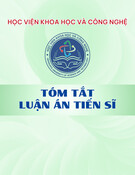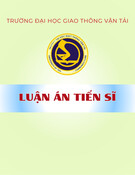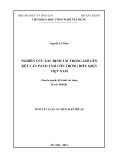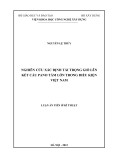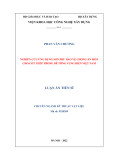
III
ABSTRACT
Steel fiber reinforced concrete (SFRC) is a multiple-composite material
developed during the early 1970s. In SFRC, short steel fibers are randomly distributed
in concrete. Steel fibers can prevent the development of micro-cracks inside the
concrete and reduce the expansion and development of the macro-cracks, thus
enhance mechanical performance of SFRC. However, there is lack of studies on the
influence of flowability of fresh SFRC on the steel fiber distribution patterns and
mechanical properties of hardened SFRC.
In this research, steel fibers made by the thin-plate shearing method are used.
Standard specimens are cast in which steel fibers are added to the concrete mix. The
slumps ranging from 80 mm to 200 mm are employed as the parameter to reflect the
flowability of SFRC. The main research work is as follows:
(1) By cutting the specimens in three directions (transverse, horizontal and
vertical sections) and quantizing the steel fibers in each section, effects of
flowability on steel fiber distribution patterns are assessed. Distribution rate,
distribution coefficient and orientation coefficient are the three factors used
for describing steel fiber distribution patterns in this research. Calculated
results of these factors of different flowability SFRC are summarized and
compared.
(2) Basic mechanical properties tests including compressive strength, splitting
tensile strength and flexural strength tests are conducted for different
flowability SFRC. The splitting tensile tests along three directions of
specimens of SFRC are carried out in view of the different orientation of steel






